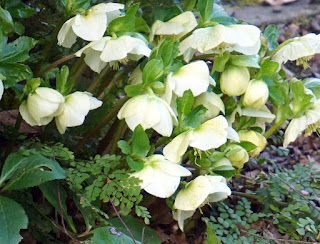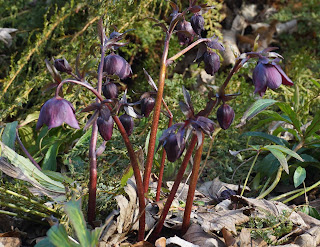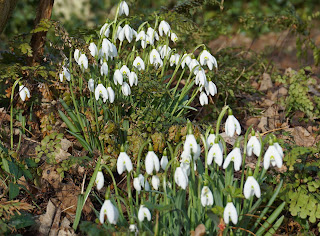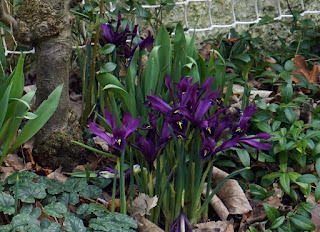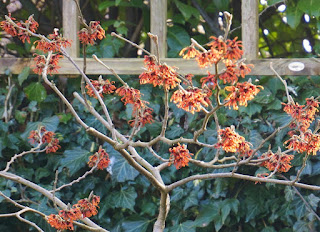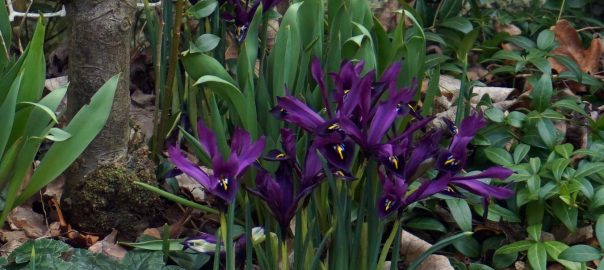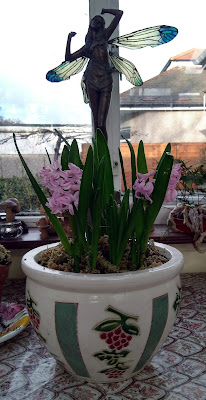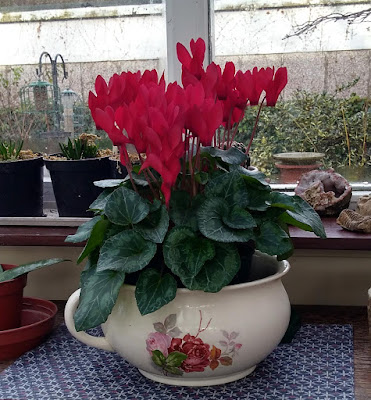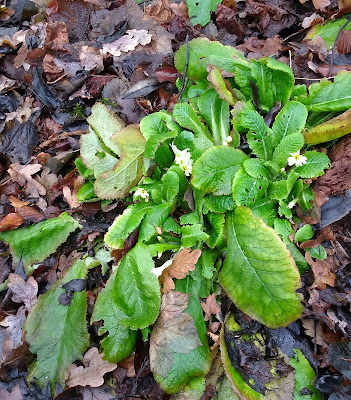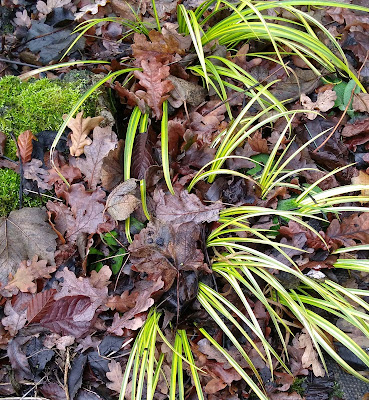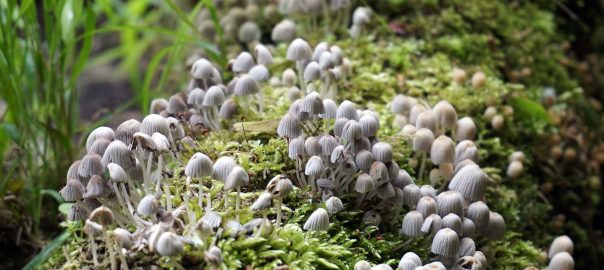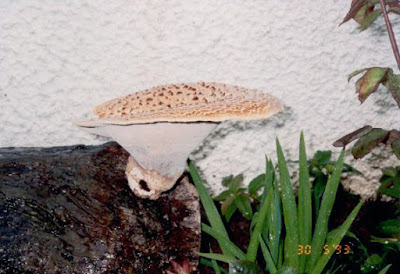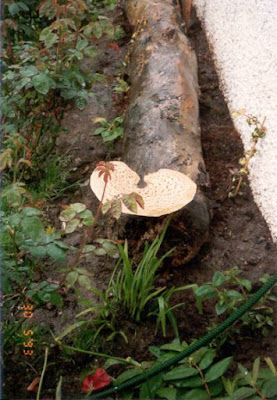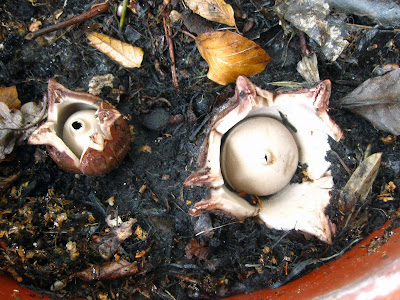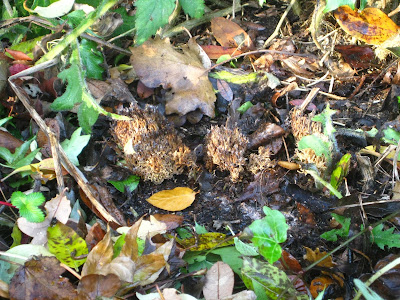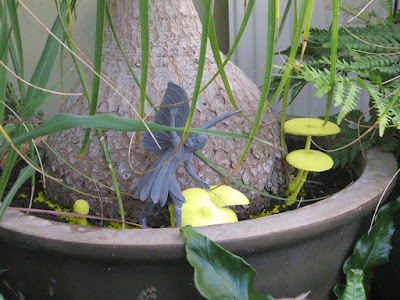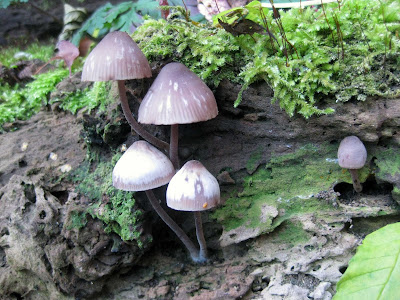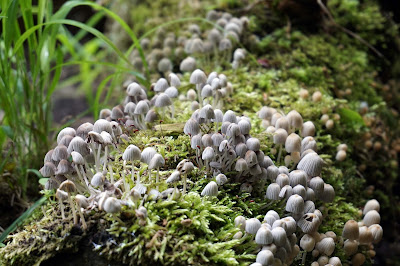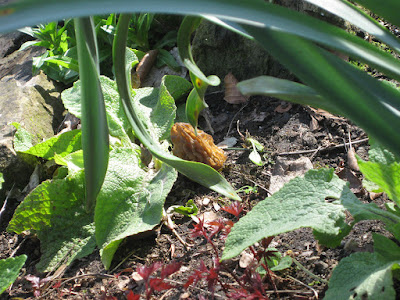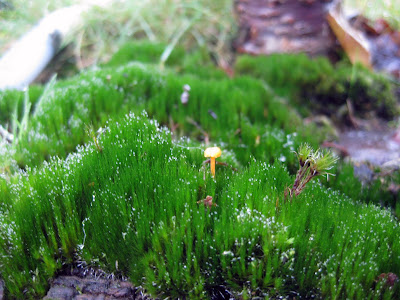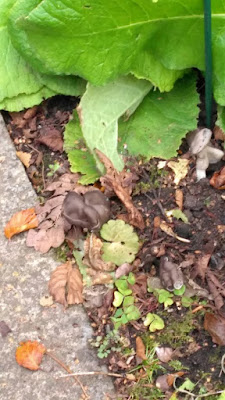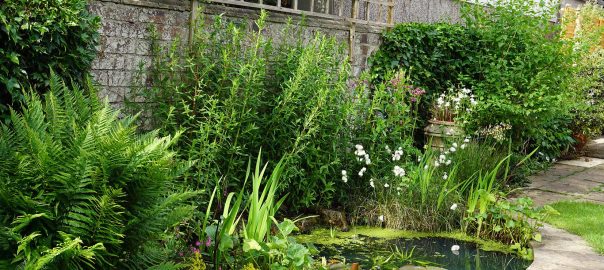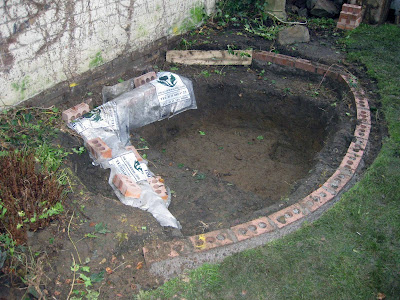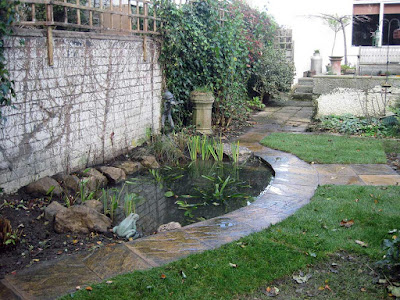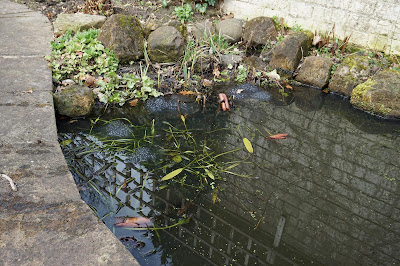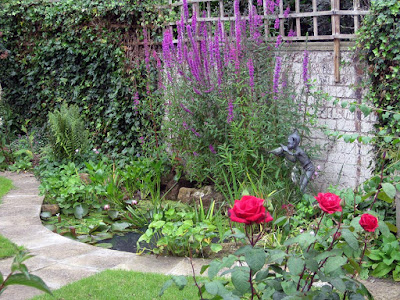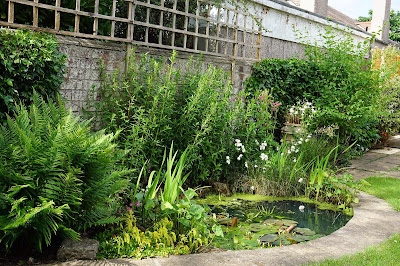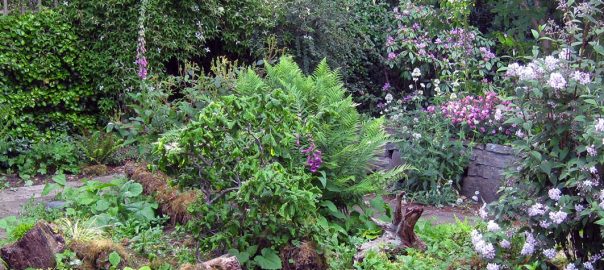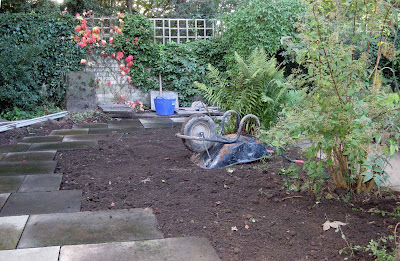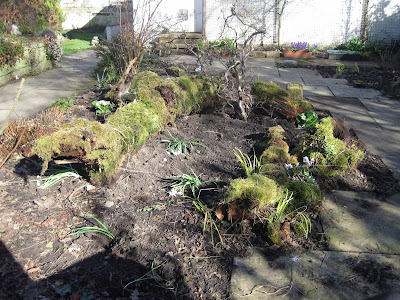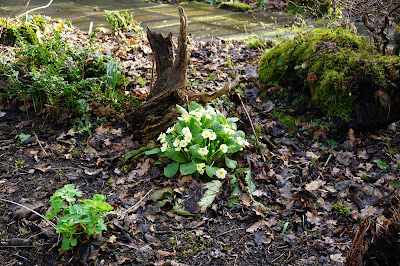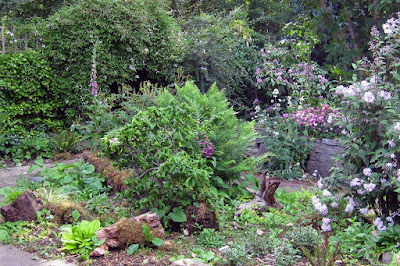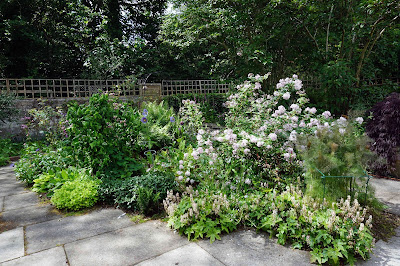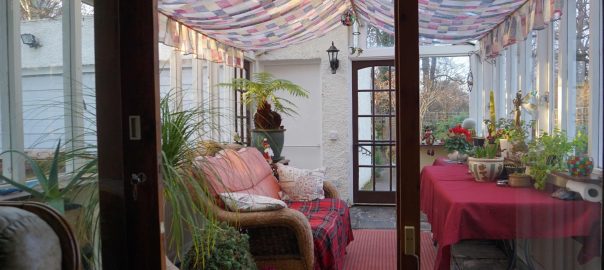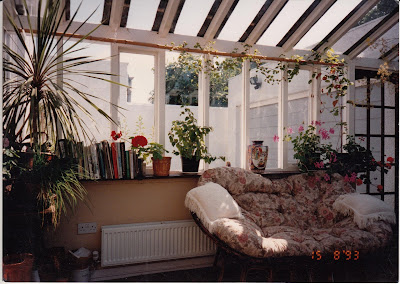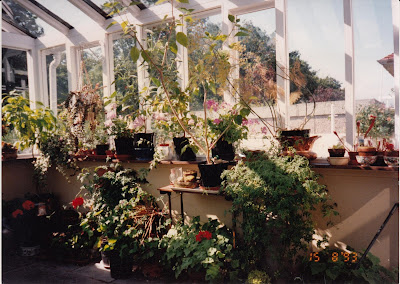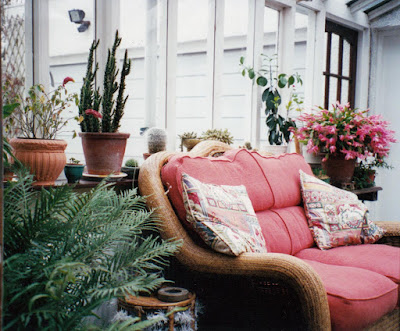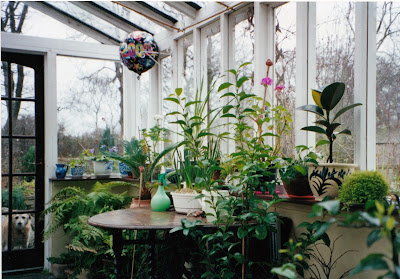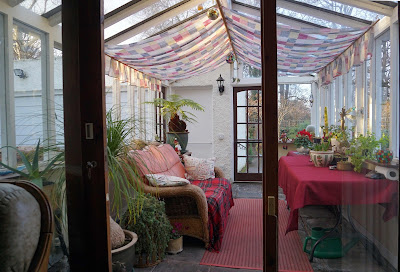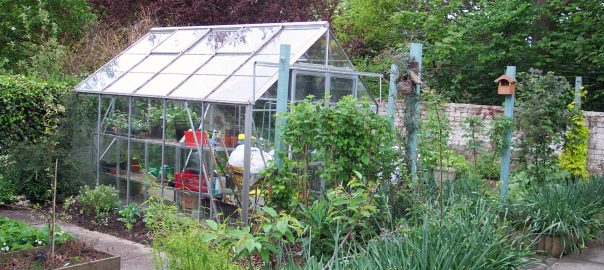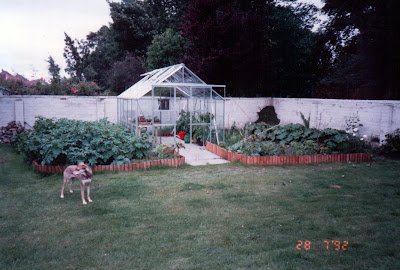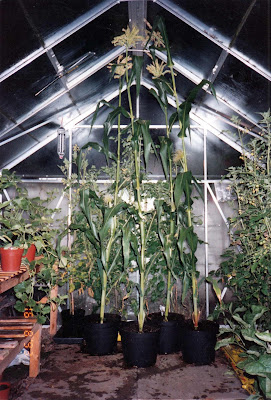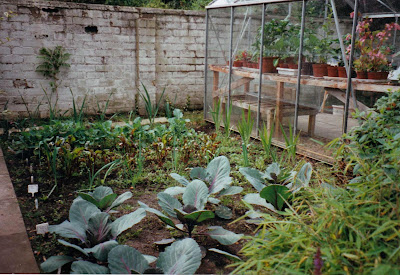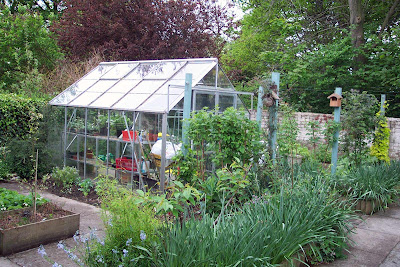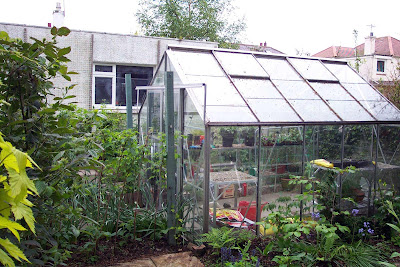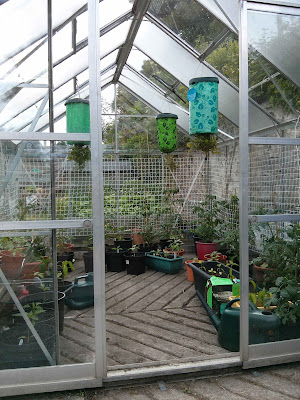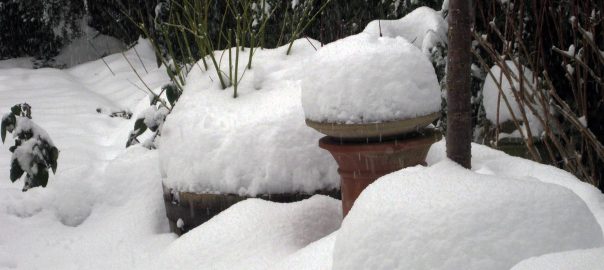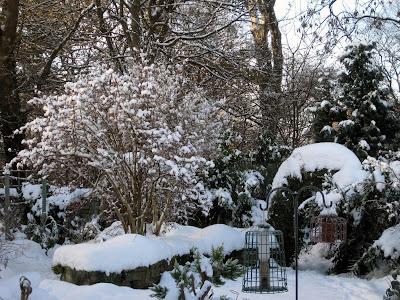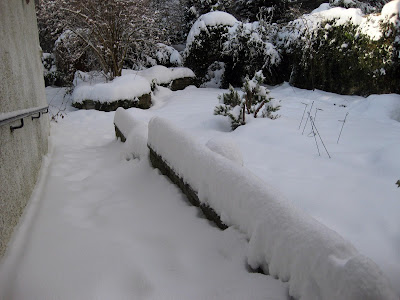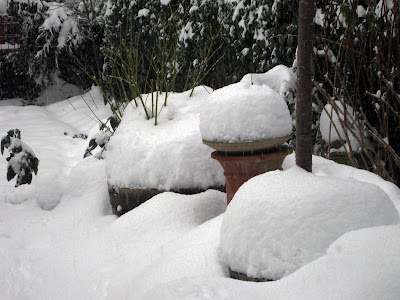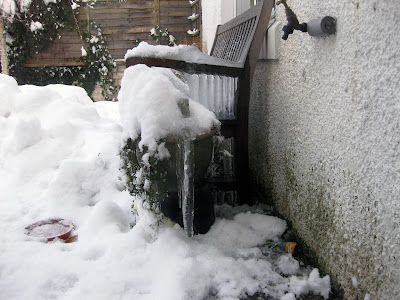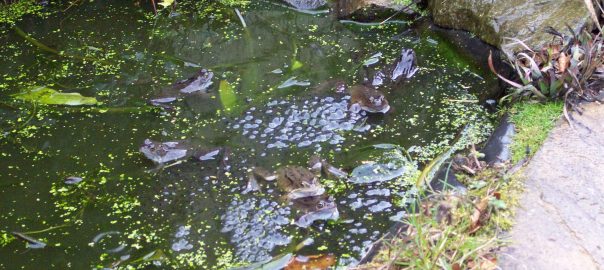My garden is my sanctuary where I can just sit and just be. I don’t need to think about anything in particular but instead just watch, feel and listen to what is going on in the
garden. The sounds are mostly the birds different songs and swishing of the leaves in the wind or maybe splashing of birds having a bath. The squirrels bark at each other and you can hear them leaping through the branches. Birds can be heard rustling through the dried leaves in autumn looking for creepy crawlies, frogs can be heard croaking in the spring looking for a mate. High above are the calls of the sparrow hawk and in summer when the swifts arrive they scream over the gardens catching a meal on the way. I love to hear the
constant chatter of the sparrows congregating in the Cotoneaster over next door’s garage roof. I used to hear crickets and had fun trying to find them but sadly I haven’t seen or heard them for a few years now. I plant lots of flowers for bees and love the differences in the deep, low buzz of the huge bumble bees to the fast , ever busy, buzz of the smaller bees and wasps. The buzz changes as they enter the big flowers of the foxglove. Then there is that strange scraping noise some wasps make when scraping the wood for their
hive. The pigeons make a strange almost whistle noise with their wings when they take off. The magpies and jackdaws can be very noisy creatures cackling away to each other as can the starlings. The colours I choose are not jarring or too bright but are the more gentle pinks and mauves with a few splashes of white or even yellow for highlights. You will see dark purples and burgundy running through too but mostly it is green. I am drawn towards plants with texture like ferns and grasses to run your hands over of soft plants like the feathery fennel to brush over your face. I have made areas with different habitats: logs, grasses, sun, shade, pond, shrubs, and ground cover to entice the wildlife in and I do try not to use chemicals and if I do use any at all I make sure it is at a time that won’t harm the wildlife. I get such a buzz of excitement when I spot some new visitor in the garden with the exception of things like New Zealand flatworms and Spanish slugs. I do go on early morning patrols to get rid of these as I haven’t heard of any native predator that will help out. Please excuse the photos – I have a new camera and will hopefully do better in the future.
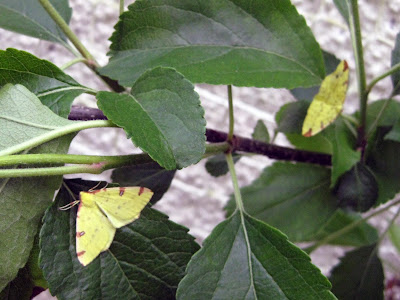 |
| Brimstone moths |
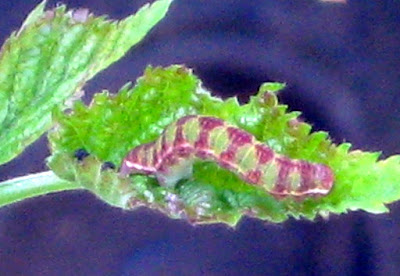 |
| Lime-speck moth caterpillar |
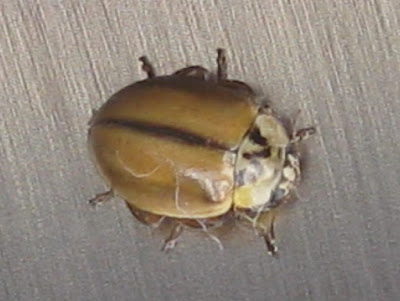 |
| Larch ladybird |
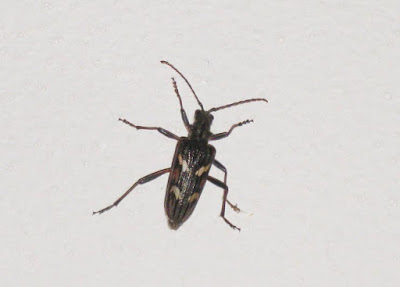 |
| Long-horn beetle |
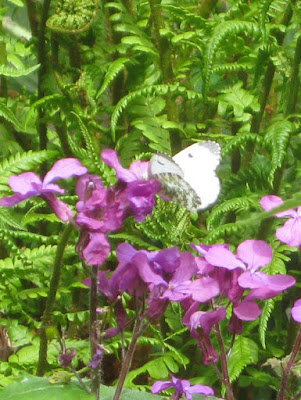 |
| Orange tip female |
 |
| Spanish slug |
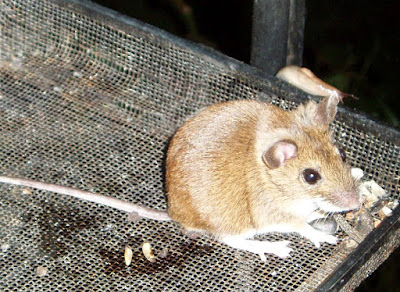 |
| Mouse |
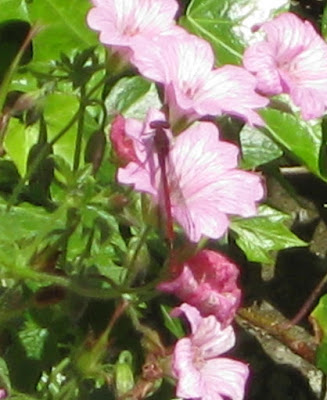 |
| Small Red damselfly |
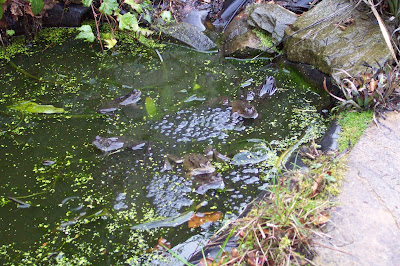 |
| Frogs |
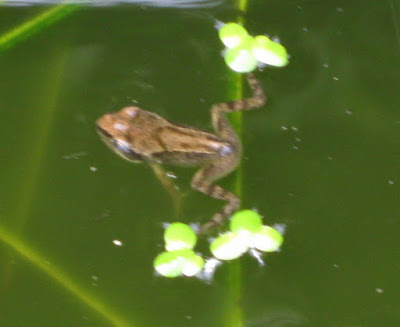 |
| Baby frog |
